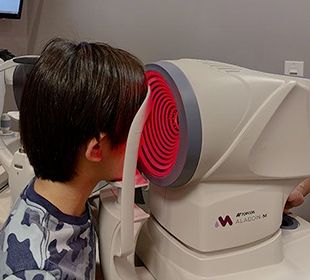Axial length is the measurement of the length of eyeball from cornea to retina. Myopia progression is due to elongation of the axial length.

The longer the axial length, the higher the amount of myopia. Consequently, it increases the risk of visual impairment pathologies such as:
Myopia Maculopathy
Glaucoma
Retinal detachment
Cataracts
Of all the above diseases, Retinal detachment and Myopic Maculopathy are the m

Table 1
Anterior Biometry
Axial length measurement using a non-contact optical anterior biometry has become an integral part of myopia control management:
It helps identify the risk of vision impairment due to myopic retinal related pathologies. See Table 2.

Table 2
It determines the rate of axial length growth and myopic progression similar to a height growth curve by the pediatrician. See table 3.
It helps us to track and determine the efficacy of a given myopia control treatment program. An effective myopia control treatment, such as Ortho K, MiSight 1 day contact lens and atropine, flattens the axial length growth curve and slow down myopic progression rate denoted on the flagged section. See table 3.

Table 3

In addition, Anterior A scan biometry works well on children because the measurement is highly accurate and repeatable. The non-contact nature of the testing is very children friendly.







